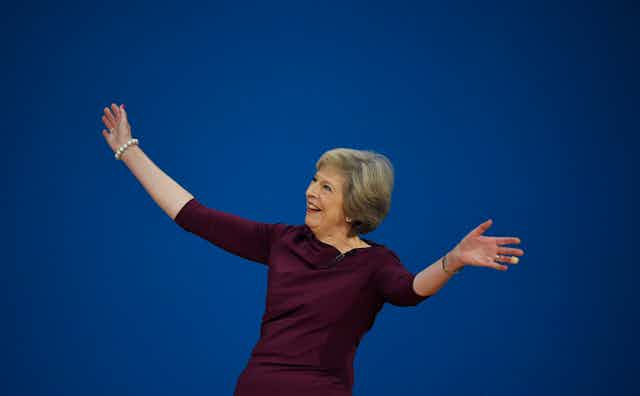Most prime ministers have a honeymoon period when they first enter Number 10; a few months in which the press is less critical and things seem optimistic. Theresa May’s predecessor David Cameron had stood in Downing Street’s rose garden with Nick Clegg to announce a new type of politics. Even Gordon Brown saw a few months in which his poll ratings rocketed.
May didn’t have an easy entry to Downing Street – with the Conservative leadership election ending before it had even got into full swing, she found herself thrown into the role much sooner than expected. And she has been permanently surrounded by talk of Brexit. But she has, so far, maintained a comfortable lead over Jeremy Corbyn’s divided Labour. Her task, then, as she addressed her party and the nation, was to try to cement this lead.
And to a large extent she succeeded in doing so. Given that the press has found most of the speeches made at this year’s party conference to be “paint-dryingly, grass-growingly, sheep-countingly dull”, this wasn’t going to be too hard a task.
It may have lacked the drama and strong emotion of a Tony Blair or a Cameron conference speech, but May and her team had carefully briefed its key themes in the morning. The media was told to expect a call to reclaim “the centre ground”. This was the moment for the Conservatives to move into the space occupied for so long by New Labour.
So, naturally, this is the context in which her speech has been interpreted by the press. May is positioning itself further towards the left, helping “ordinary working class people”. May wants to tackle inequality. May wants to tackle tax avoidance.

In pledging all this, she has joined a long list of prime ministers and party leaders asking for a “new approach” to politics and who insist that there is a “plan”.
It’s true that we now have a better idea of the broad philosophy of the May government. We know she aspires to be a “great” prime minister like Thatcher, Atlee or Churchill, whose portraits she walks past every day. We know that she wants to make her country more fair and her party more responsive to the needs of ordinary working people. We know that she wants to give everyone more opportunity to make a success of their lives.
This was crafted as a speech to the Conservative party faithful, praising the achievements of the Cameron government. But it was also a speech for those Labour voters who are beginning to find the internal divisions in the party unpalatable. The emphasis on being “the party of the workers” was a clever one, reaching out to those who consider the party to favour only the rich and powerful.
She may not have singled out Corbyn but she worked hard to paint a picture of today’s Labour Party as divided and in disarray, a party which, like the Conservatives in the late 1990s, is out of touch with what the country wants and needs. Labour is “divisive” and abuses its own MPs. Labour, is the “nasty party”. All this was enough to start re-positioning the Conservative Party. It’s probably the start of a line on Labour we’ll hear regularly in the run up to a 2020 election.
But what we don’t really is know how May is going to get to where she wants to go. The desire for change sounded impressive, but this speech was also significant for what was not said. There were no detailed policy announcements, just hints at what is to come. There was talk of energy tariffs, the need to build more homes and, of course, reference to the grammar schools plan that has her party members so excited. But there were no new announcements, no figures or plans.
In fact, May said right at the start that this speech was about her philosophy for Britain “after” Brexit. It’s not clear if this means once Article 50 has been triggered early next year, or once the nitty gritty of exit negotiations has been concluded. The Autumn Statement or next year’s budget may give a clearer idea of the ways in which the new Conservative government will reach out to help “ordinary” people. But we could equally be in for a much longer wait.

